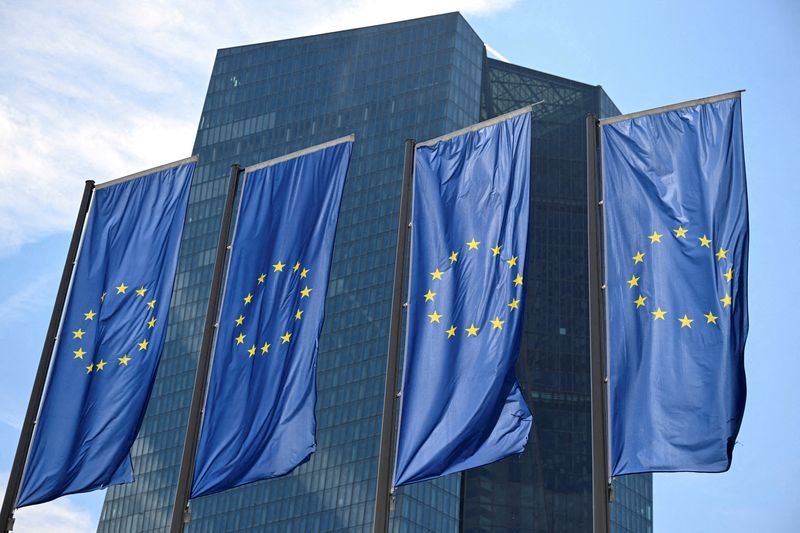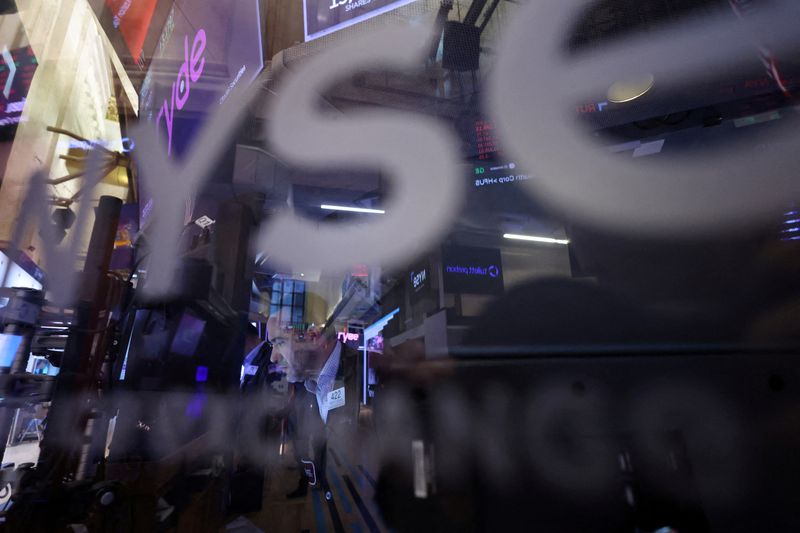By Harry Robertson
LONDON (Reuters) – A rapid divergence between euro zone and U.S. government bond markets is expected to continue as an increasingly dull European economy increases pressure on the European Central Bank to quickly cut interest rates.
The closely watched spread between US and German yields has widened by around 183 basis points (bps) to the widest since July, while US yields have risen in recent weeks, while German yields have risen only slightly. Yields move inversely to prices.
“We think this market dynamic needs to continue,” says Simon Blundell, co-head of European fixed income fundamentals at BlackRock (NYSE:), an $11.5 trillion asset manager who favors European over US bonds.
While the sharp acceleration in US job growth in September underlines the strength of the US economy, business activity in the euro area shrank unexpectedly last month.
Traders now expect the US Federal Reserve to slow after a 50 basis point rate cut in September, but the ECB is tipped this week to make its third rate cut since June.
Goldman Sachs said the interest rate gap between the US and Germany is likely to widen to 200 basis points, a level last seen earlier this year.
“We continue to expect European yields to outperform US yields as data are weaker and central bank less willing to frontload,” the bank’s analysts said in a note.
The widening yield gap is already spilling over into other markets, with the euro falling to its lowest level in about two months as higher yields lure investors into US bonds, boosting the dollar.
EUROPE SPUTTERS
Germany’s finance ministry said last week that Europe’s largest economy was likely to shrink for a second year in a row in 2024. The once-mighty manufacturing sector continues to struggle in the wake of an energy crisis sparked by the war in Ukraine.
“The numbers are really not good,” said Michael Weidner, co-head of Global Fixed Income at Lazard (NYSE:) Asset Management. “Neither the hard numbers being reported nor the soft numbers on the outlook and various indicators. They are all quite gloomy and the mood is even worse.”
France, meanwhile, has pledged to raise taxes and cut spending in an effort to reduce its budget deficit. Although many investors consider this necessary, it will weigh on the growth of the eurozone’s second largest economy.
Reinout De Bock, head of European rates strategy at UBS, said eurozone yields could fall by as much as 1% next year if growth does not pick up, and said reducing France’s budget deficit would be a drag. A slowdown in China, a major trading partner, is another concern for investors.
In stark contrast, September’s headline-grabbing employment report has allayed fears of a sharp slowdown in US growth and prompted investors to scrap their bets that the Fed would cut rates by 50 basis points before a second meeting in November.
The Organization for Economic Co-operation and Development said in September that it expected the US economy to grow 2.6% this year and 1.6% in 2025, compared with growth rates of 0.7% and 1.3% in the eurozone.
DEEP RATE REDUCTIONS
Traders expect the ECB to stop cutting interest rates at the end of next year to around 2%, well above the sub-zero level before the coronavirus pandemic. The ECB’s main interest rate is currently 3.5%.
Still, Bank of America analysts are skeptical that the eurozone economy can sustain interest rates at 2%, a level that many economists consider “neutral” – a level that neither stimulates nor inhibits economic activity.
“Today’s world is not much different from the world of 2017-2018: private domestic demand remains surprisingly weak,” BofA strategists led by Ralf Preusser wrote last week. BofA expects European bond prices to rise.
Not all investors are gloomy about the prospects for the eurozone, as they point to stronger growth in countries such as Spain and Italy.
“European data is OK and actually rising compared to expectations,” said Lloyd Harris, head of fixed income at Premier Miton Investors.

Harris said he thinks markets are pricing in too many rate cuts and expects bond yields to rise again, albeit more in the US than in Europe.
“The U.S. is a little different because we have more government spending and more willingness to run a larger budget deficit, and that’s what drives the U.S. economy forward.”


